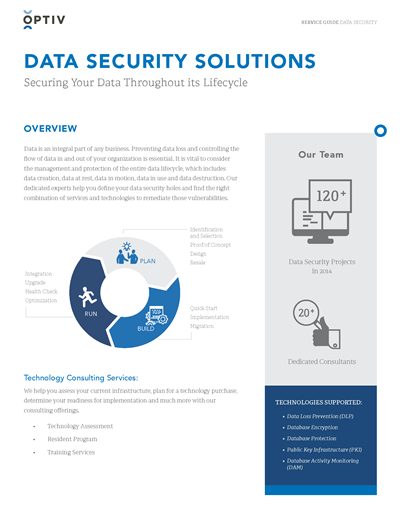The Impact of Effective Data Destruction on Cyber Security Danger Administration
The Impact of Effective Data Destruction on Cyber Security Danger Administration
Blog Article
The Relevance of Effective Data Devastation Practices in Shielding Sensitive Info and Ensuring Computer System Protection
In an era where data breaches are significantly typical, the value of reliable data destruction practices can not be overstated. Organizations face considerable threats when delicate information is inadequately disposed of, potentially bring about unauthorized gain access to and serious monetary consequences. Applying durable information devastation approaches not only mitigates these risks but also aligns with lawful conformity needs, ensuring that organizations copyright their reputation and foster client trust. However, the inquiry continues to be: what certain methods can be utilized to improve these methods, and how can organizations properly integrate them into their overall cybersecurity structure?
Recognizing Data Devastation
Recognizing information destruction is vital in today's digital landscape, where delicate details can conveniently be jeopardized. Reliable information damage entails not simply removing files yet guaranteeing that information is irretrievable through detailed approaches. This process is crucial for organizations that manage personal client details, copyright, or interior records, as any breach can cause extreme financial and reputational effects.
Data damage incorporates numerous methods, including shredding physical media, degaussing magnetic storage tools, and using software-based options that overwrite information multiple times. Each approach offers a particular function and should straighten with the sensitivity of the information being disposed of. Physical devastation is often preferred for hard drives containing highly personal data, while software program methods might be enough for much less delicate info.
Furthermore, adhering to industry standards and laws, such as the General Data Protection Policy (GDPR) or the Medical Insurance Portability and Accountability Act (HIPAA), is vital for compliance and to mitigate legal risks. Organizations must create a durable data destruction plan, train workers on best techniques, and routinely audit their treatments to make sure that all sensitive details is taken care of safely and efficiently.
Risks of Inadequate Practices
Poor information damage practices reveal organizations to substantial dangers that can have far-reaching repercussions. When sensitive details is not correctly dealt with, it continues to be susceptible to unauthorized gain access to, which can lead to information breaches and identification burglary. Such incidents not only jeopardize the protection of people but additionally stain the company's track record, leading to a loss of consumer count on and possible financial consequences.
Moreover, regulative conformity is increasingly rigid in lots of markets. Failure to stick to information destruction regulations can cause hefty fines and lawsuits against organizations. These charges can divert and strain monetary resources focus from core service operations.
In enhancement, the misuse of residual information can cause intellectual residential or commercial property burglary or corporate reconnaissance, threatening competitive advantages (data destruction). The influence of inadequate information damage expands past instant monetary losses; it can likewise result in long-term damages to brand integrity and market setting

Organizations should recognize that information security is not solely about protecting against violations; it additionally includes the liable management of information throughout its lifecycle. Disregarding efficient information devastation procedures can have catastrophic effects, underscoring the need for durable steps to alleviate these risks.
Finest Practices for Data Devastation
Executing reliable data damage techniques is crucial for guarding sensitive details and preserving conformity with governing criteria. Organizations must take on a multi-faceted approach to make sure that information is irretrievable, thus avoiding unapproved accessibility and potential violations.
First, data ought to be categorized based on sensitivity, enabling organizations to use proper damage approaches tailored to the level of threat. For electronic information, utilizing software-based data-wiping tools that abide by sector standards can successfully overwrite existing information. Physical destruction methods, such as shredding article source or degaussing, are critical for tools that keep delicate information, making sure complete obliteration.
Establishing a clear information retention plan is important, describing how much time different kinds of information need to be preserved before damage. Regular audits of data storage space systems are also essential to identify unneeded or obsolete data needing elimination.
In addition, training staff members on the significance of information damage and the specific methods to follow fosters a culture of safety within the organization. Ultimately, maintaining documentation of data devastation refines offers responsibility and supports compliance with outside regulations and internal policies. By adhering to these finest methods, companies can considerably reduce the threats related to information exposure.
Legal and Compliance Factors To Consider

Failure to abide by these regulations can result in extreme fines, consisting of considerable penalties and reputational damages. Organizations needs to carry out a durable information devastation plan that lines up with these legal structures and supplies clear standards on the correct techniques of information disposal, whether physical shredding or digital wiping.
In addition, preserving documents of information devastation tasks is vital for demonstrating compliance during audits or inspections. By focusing on lawful and conformity considerations, companies can enhance their information protection stance and foster trust with customers and stakeholders, eventually contributing to an extra safe and secure data management read review setting.
Advantages of Effective Information Devastation
Reliable information destruction methods extend beyond mere compliance; they provide substantial advantages to organizations that prioritize them. By making certain that sensitive info is irretrievably destroyed, organizations mitigate the danger of information breaches and the possible economic effects related to them. This aggressive technique not just safeguards versus unapproved accessibility however also boosts the total trustworthiness of the company in the eyes of stakeholders and clients.
Carrying out durable data damage techniques, such as physical destruction of storage space tools or sophisticated information cleaning strategies, adds to the fortifying of a company's cybersecurity posture. data destruction. It lowers the likelihood of copyright theft and protects proprietary info, consequently maintaining a competitive side in the market

Final Thought
In final thought, effective data destruction methods are essential for protecting sensitive details and boosting total computer security. Ultimately, a dedication to robust information destruction strategies cultivates a society of responsibility, consequently reinforcing a company's cybersecurity pose and maintaining customer trust.

Report this page